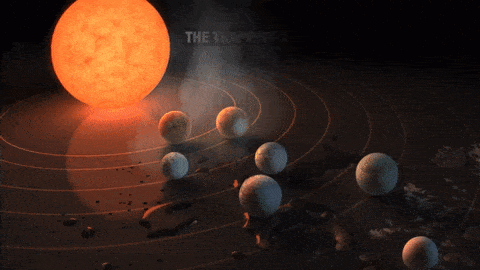
Stellar Observations & Star Clusters
Quiz
•
Science
•
9th - 12th Grade
•
Practice Problem
•
Medium
+3
Standards-aligned

Clint Sandford
Used 102+ times
FREE Resource
Enhance your content in a minute
20 questions
Show all answers
1.
MULTIPLE CHOICE QUESTION
45 sec • 1 pt

The Rosette nebula is an example of a(n) ____ nebula - which glows due to hot nearby stars.
spectacular
emission
diffuse
globular
2.
MULTIPLE CHOICE QUESTION
45 sec • 1 pt

Emission nebulae can tell astronomers
how old the Universe is.
where the old stars of the galaxy are located.
how far away the nebula cloud is.
where other new stars are forming.
Tags
NGSS.HS-ESS1-3
3.
MULTIPLE CHOICE QUESTION
45 sec • 1 pt

The Infrared Astronomy Satellite (IRAS ) launched in 1983 first imaged
infrared signatures of nearby planets.
galactic-core formations.
new star formation with proto-planetary disks.
black holes at the center of each globular cluster.
Tags
NGSS.HS-PS4-3
4.
MULTIPLE CHOICE QUESTION
45 sec • 1 pt

The Beta Pictoris system that was imaged by IRAS clearly showed
a planetary disk of material circling the young star.
massive planets and comets still swirling around.
ancient aliens.
that it was part of an open star cluster.
Tags
NGSS.MS-ESS1-2
5.
MULTIPLE CHOICE QUESTION
45 sec • 1 pt

Protostars shine brightly in the ____ region of the light spectrum.
optical (or visible)
infrared
x-ray
ultraviolet
Tags
NGSS.HS-PS4-3
6.
MULTIPLE CHOICE QUESTION
45 sec • 1 pt

Protostars are very active as evident by infrared observations of dense, concentrated emissions
of solar flares & coronal mass ejections.
of x-rays into the surrounding planetary disks.
called biaxial collimated super flows.
called bipolar jets or flows.
7.
MULTIPLE CHOICE QUESTION
45 sec • 1 pt

When a star is born in a nebula, ____ are produced which triggers more stars to form.
tidal waves
shock waves
bipolar jets
gravity waves
Create a free account and access millions of resources
Create resources
Host any resource
Get auto-graded reports

Continue with Google

Continue with Email

Continue with Classlink

Continue with Clever
or continue with

Microsoft
%20(1).png)
Apple
Others
Already have an account?
Similar Resources on Wayground

15 questions
Quiz on Stars and Astronomy
Quiz
•
8th Grade - University

19 questions
Chapter 21 Test: Stars, Galaxies, and the Universe
Quiz
•
9th Grade

15 questions
History of Astronomy
Quiz
•
9th - 12th Grade

15 questions
Age of Rocks
Quiz
•
6th Grade - University

16 questions
Astronomy Unit 3: The Solar System Practice
Quiz
•
10th - 12th Grade

17 questions
1st 9 week practice
Quiz
•
10th Grade

20 questions
CORE120- Review
Quiz
•
11th Grade

17 questions
Stars and Stellar Evolution Review
Quiz
•
9th Grade - University
Popular Resources on Wayground

5 questions
This is not a...winter edition (Drawing game)
Quiz
•
1st - 5th Grade

15 questions
4:3 Model Multiplication of Decimals by Whole Numbers
Quiz
•
5th Grade

25 questions
Multiplication Facts
Quiz
•
5th Grade

10 questions
The Best Christmas Pageant Ever Chapters 1 & 2
Quiz
•
4th Grade

12 questions
Unit 4 Review Day
Quiz
•
3rd Grade

10 questions
Identify Iconic Christmas Movie Scenes
Interactive video
•
6th - 10th Grade

20 questions
Christmas Trivia
Quiz
•
6th - 8th Grade

18 questions
Kids Christmas Trivia
Quiz
•
KG - 5th Grade
Discover more resources for Science

10 questions
Exploring the Energy Cycle: Photosynthesis and Cellular Respiration
Interactive video
•
6th - 10th Grade

15 questions
Domain 3 – Classification: 15-Question Assessment
Quiz
•
9th Grade

10 questions
Exploring Plate Tectonics and Their Boundaries
Interactive video
•
6th - 10th Grade

15 questions
Domain 4 – Evolution: 15-Question Assessment
Quiz
•
9th Grade

15 questions
Domain 5 – Ecology: 15-Question Assessment
Quiz
•
9th Grade

10 questions
Exploring Light and Waves Concepts
Interactive video
•
6th - 10th Grade

10 questions
EOC Domain 3: Taxonomy
Lesson
•
9th - 10th Grade

9 questions
EOC Domain 4: Evolution
Lesson
•
9th - 10th Grade



